IN ALBEROBELLO
Alberobello, in Puglia, together with its trulli, is one of the 51 sites included in the Unesco World Heritage Site List.
The name comes from the old greek τρούλος (dome), indicating some prehistoric dry stone buildings in the shape of a dome. The stone was taken from the calcareous rocks of the Murge Plateau.
You can find trulli in the Itria Valley, spreading over Province of Brindisi, Bari and Taranto. Trulli are still used as houses, being a brilliant and long-lived example of a spontaneous architecture.
Alberobello, a small town situated in Bari hinterland, undoubtedly represents the capital of trulli: its old town is entirely composed by the pyramid-shaped houses, making this town unique in the world.
According to some studies, trulli dates back to the half of the 14th century. At that time, it was common the idea of demolishing and rebuild a building instead of restoring it.
Maybe the dry stone building, without using mortar, has been imposed to farmers throughout the 15th century by the Dukes of Conversano, to escape an edict of the Kingdom of Naples, requesting taxes for any new urban settlement. So those buildings looked like precarious, easy to demolish and not taxable.
Actually, trulli are not precarious: their internal structure has an extraordinary static capacity, even if there is not any element of support or connection.
The trullo has, approximately, a square plan; the base is of natural rock. On it there is the heavy lime wall.
Usually. trulli are modular: the internal rooms are placed around the main room. They are warm in winter period and cold during summer period, thanks to large walls and the scarce presence of windows.
The roof is composed by limestone slabs, placed in increasingly smaller concentric rings, called "chianche" inside and "chiancarelle" outside (thinner).
The keystone is very important. Often it is decorated with esoteric, spiritual or propitiatory motifs. On the roof there is an ingenious protruding cornice, used to collect rainwater in suitable cistern tanks.
Trulli are a unique example of a surviving ancient construction, still used nowadays. Visiting the enchanting Alberobello is travelling in a timeless town.
Useful links
IAT- Informazioni e Accoglienza Turistica
Tel-fax. +39 080 4322060
This email address is being protected from spambots. You need JavaScript enabled to view it.
Comune di Alberobello
This email address is being protected from spambots. You need JavaScript enabled to view it.
+39 080-4321200 / +39 080-4036211 / +39 080-4325706
Associazione Turistica Pro Loco Alberobello
Regione Puglia Turismo
How to reach
auto
A14 uscita Bari Nord o Gioia del Colle
aereo
Aeroporto di Bari Palese o aeroporto del Casale di Brindisi
Train
Trenitalia, Ferrovie del SE
What to see in the town
Rione Monti:
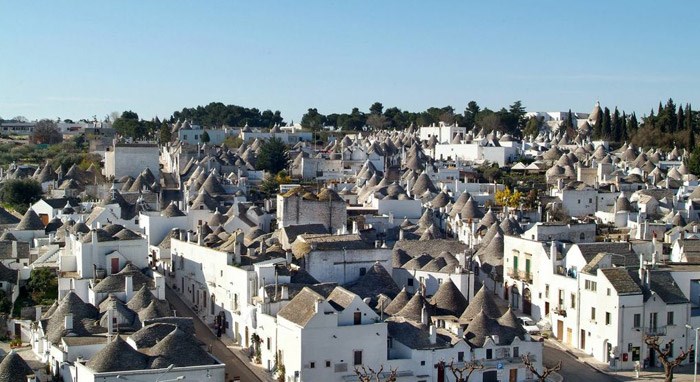
Area made by about 1030 trulli. Among them there are the "Trulli Siamesi", characterized by two façades, two pinnacles and a low fireplace. They have no windows.
Aia Piccola:
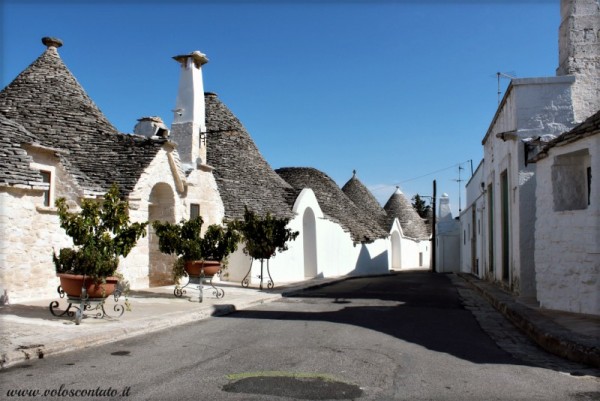
Area characterized by a network of narrow and winding alleys
Trullo Sovrano:
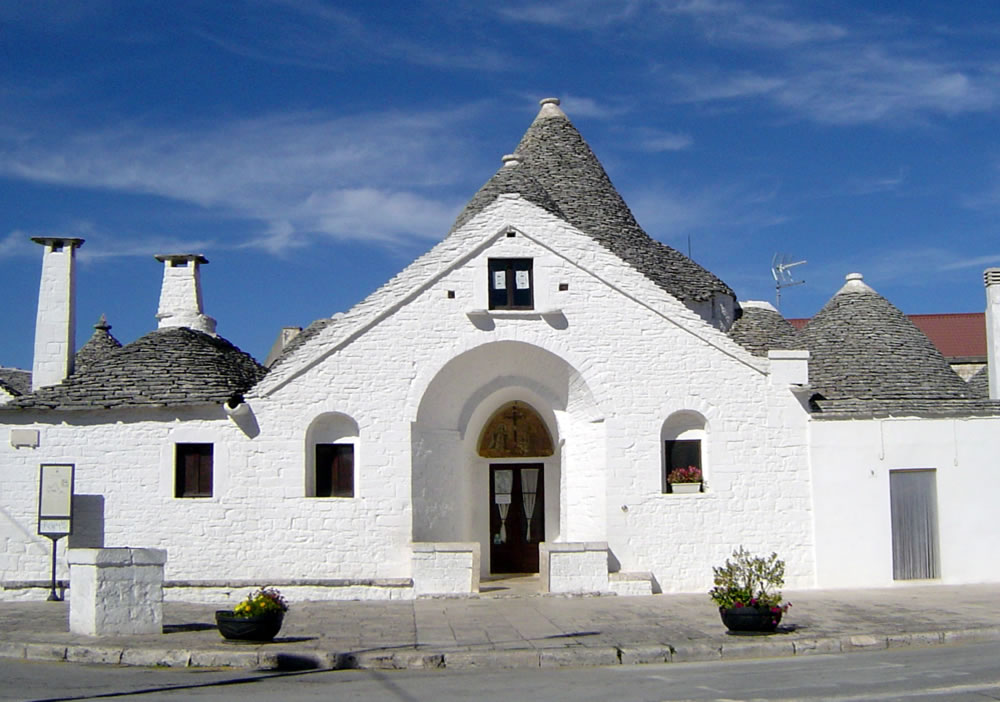
It is the only trullo which is built on two floors. Nowadays it is a museum.
Address: Piazza Sacramento 10, 70011 Alberobello (BA)
Chiesa di Sant’Antonio:
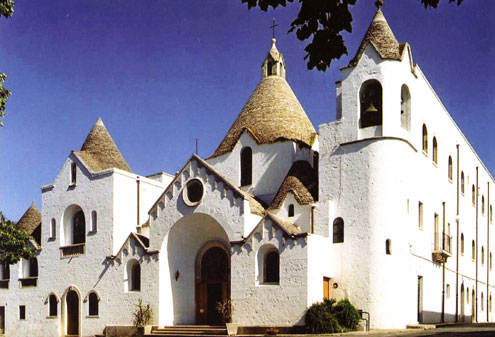
It is a trullo-shaped building, with a monumental entrance and a staircase and dominated by a rose window. It is in the shape of a Greek cross, it has some lateral chapels and a bell tower on the side.
Address: Via Monte Pertica, 70011 Alberobello (BA)
La Casa d’Amore:
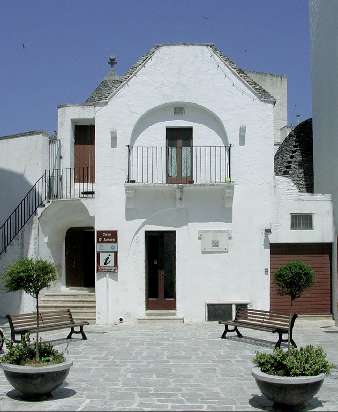
Dating back to 1797, it is the first house built using mortar. Nowadays it hosts the tourist information office.
Address: Piazza Ferdinando IV, 70011 Alberobello (BA)
Santuario di Santi Medici:
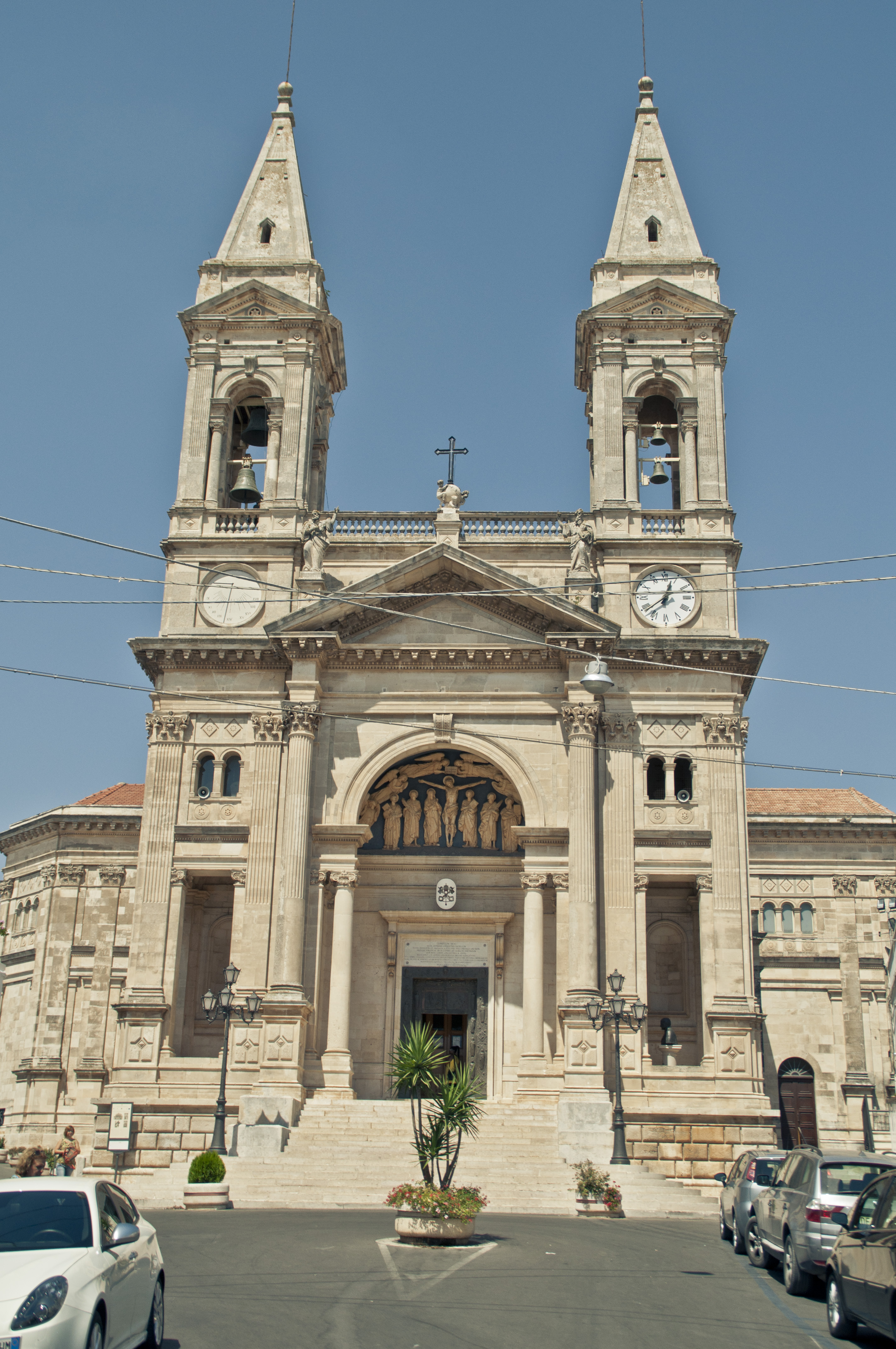
It is dedicated to Saints Cosma e Damiano, containing their reliquary and a painting of Our Lady of Loreto.
Address: piazza Curri, 70011 Alberobello (BA)
ITRIA VALLEY
The Itria Valley welcomes the visitor with matchless expanses of olive trees, born from a perfumed red soil, making the panorama a steam of wonderful chromatic effects.
Also known as "Trulli Valley", it extends among the Province of Bari, Brindisi and Taranto and it includes the municipalities of Alberobello, Carovigno, Castellana Grotte, Ceglie Messapica, Cisternino, Fasano, Locorotondo, Martina Franca, Noci, Ostuni, Putignano, San Michele Salentino, San Vito dei Normanni and Villa Castelli.
To see
Maybe for the white buildings or for the framing vegetation, every small village in the valley is surrounded by a magic, fairy-tale atmosphere.
In the heart of the valley, Alberobello, togheter with its trulli, inserted in the Unesco World Heritage List in 1966, is a must. Strolling in the Rione Monti or in the Aia Piccola is really enchanting.
There is not only Alberobello. Trulli are spread in the countryside too, for example in Cisternino, siuated in the Murgia dei Trulli, or in Locorotondo, among the most beautiful villages in Italy. Called "Luogorotondo" until the mid-nineteenth century thanks because of the round shape of the town, it is part of the Trulli area.
Do not miss a "trip to the center of the earth", in Castellana caves (municipality of Castellana Grotte), where the grave, the first and biggest cave and the only one connected with the outside world, together with the White Cave will leave every visitor speechless.
Not so far from Bari there is Martina Franca, the most populated town of the valley, known for its baroque architecture and for the homonymous music festival.
Then there is Ostuni, the "White City" par excellence, the only in the valley having the access to the sea. It is called White City because of the characteristic old town, once white-washed. Ostuni, together with Taranto and Santa Maria di Leuca, is one of the ideal vertex of the Salento peninsula
To do
Castellana caves are always open. You can enjoy the visit helped by expert guides.
Walkings, workshops and tastings in the educational masserie or farms, very spread in the area, proposing for schools or visitors, direct experiences of observation, study, manipulation, fruit harvesting, participation in all stages of transformation of agricultural products, creation of small rush objects, tasting of local products.
Not to be missed
In Alberobello, among the trulli, in an enchanting atmosphere, the Living Nativity in December and the Living Via Crucis during the Easter period are staged.
In Martina Franca, in July, since 1975, the Festival della Valle d'Itria has been staged.
On a hill, overlooking Fasano, there is the so called "Selva di Fasano", where you can visit the Zoo Safari, a park suitable for all ages, offering a really incredible show; more than 40 species living in the wild.



